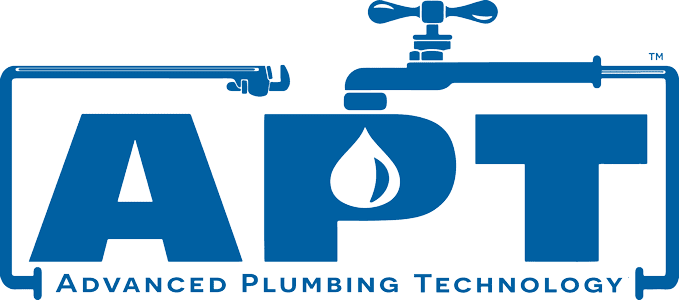Backflow Prevention: Safeguarding Your Water Supply
September 23rd, 2023Posted by Brian Shoemaker
In the realm of modern plumbing, where water flows effortlessly from our taps, showers, and faucets, it’s easy to overlook the critical aspect of backflow prevention. Backflow might seem like an obscure term, but its significance in maintaining a safe and potable water supply cannot be emphasized enough. At Advanced Plumbing Technology, we understand the paramount importance of safeguarding your water supply, and in this comprehensive guide, we delve deep into the intricacies of backflow prevention, its types, and why it should be a top priority for every homeowner.
Understanding Backflow: A Fundamental Overview
Backflow, in its simplest terms, refers to the undesirable reversal of water flow within a plumbing system. This phenomenon occurs when the pressure in the plumbing system changes, causing contaminated water from non-potable sources to flow back into the clean water supply. The consequences of backflow can be dire, as it compromises the quality and safety of the water you and your family use for drinking, cooking, and bathing.
Types of Backflow and Their Potential Hazards
There are two main types of backflow: backpressure backflow and backsiphonage. Let’s explore each type and the potential hazards they pose:
- Backpressure Backflow: This occurs when the downstream pressure in a plumbing system becomes higher than the incoming supply pressure. This situation can arise due to various factors, such as a sudden increase in demand, malfunctioning pressure-reducing valves, or the operation of industrial equipment. Backpressure backflow can lead to contamination of the potable water supply with substances like chemicals, fertilizers, and even sewage if not adequately prevented.
- Backsiphonage: Backsiphonage happens when there is a drop in supply pressure, creating a vacuum that draws water from the plumbing system back into the main supply. Common causes of backsiphonage include water main breaks, firefighting activities, and the improper installation of plumbing fixtures. This type of backflow can introduce pollutants and pathogens into the clean water supply, posing a significant health risk.
The Role of Backflow Prevention Devices
To mitigate the risks associated with backflow, specialized devices known as backflow preventers are employed. These devices are designed to maintain the integrity of your water supply by preventing the reversal of water flow. Here are some common types of backflow preventers:
- Pressure Vacuum Breaker (PVB): A PVB is a mechanical device that creates a barrier against backsiphonage. It features a spring-loaded check valve and an air inlet valve that opens when water pressure drops, allowing air to enter the system and prevent water from flowing backward. PVBs are commonly used for outdoor irrigation systems and can effectively safeguard against contaminants.
- Double Check Valve Assembly (DCVA): This assembly consists of two check valves separated by a pressure-relief chamber. DCVAs are designed to prevent both backsiphonage and backpressure backflow. They find application in various settings, including residential, commercial, and industrial environments.
- Reduced Pressure Zone (RPZ) Assembly: RPZ assemblies provide the highest level of protection against backflow incidents. They utilize a complex arrangement of check valves and relief valves to ensure that any drop in supply pressure does not lead to contamination of the water supply. RPZ assemblies are commonly used in areas where there is a high risk of cross-connections.
Why Backflow Prevention Matters: Protecting Your Health
The significance of backflow prevention extends far beyond the realm of plumbing and water supply. It is intricately linked to public health and safety. Contaminated water resulting from backflow can carry harmful pathogens, chemicals, and other pollutants that pose serious health risks when ingested or exposed to the skin.
Imagine the scenario of a garden irrigation system connected to your main water supply. If a sudden drop in supply pressure occurs due to a water main break, there’s a potential for soil and garden chemicals to be drawn back into the water supply, jeopardizing the health of your loved ones. Backflow prevention devices act as crucial barriers, ensuring that such incidents never become reality.
Installation and Maintenance: Ensuring Effectiveness
While the installation of backflow preventers is a vital step, their ongoing maintenance is equally crucial to ensure their continued effectiveness. Regular inspections, testing, and certification by licensed professionals are essential to identify any potential issues and rectify them promptly.
It’s important to note that regulations and requirements for backflow prevention can vary based on location and local codes. As a homeowner, being aware of these regulations and partnering with reputable plumbing professionals, such as Advanced Plumbing Technology, ensures that your backflow prevention devices remain compliant and fully operational.
Conclusion: Taking Charge of Your Water Supply’s Safety
In a world where clean and safe water is non-negotiable, backflow prevention emerges as a non-negotiable practice. The threat of contamination through backflow is real, and its consequences can be dire. By understanding the types of backflow, the importance of prevention devices, and the need for proper maintenance, you take a proactive stance in safeguarding your water supply.
At Advanced Plumbing Technology, we are committed to elevating your understanding of plumbing and empowering you with the knowledge needed to make informed decisions. We understand how important it is that your water supply remains untainted by backflow-related issues. Your health and safety should be the utmost priority.
